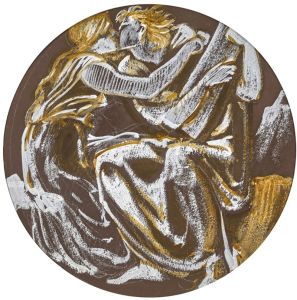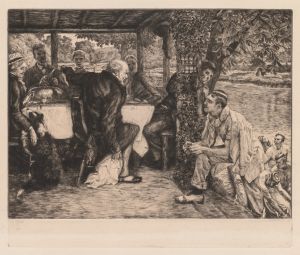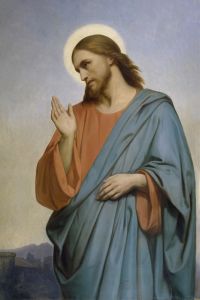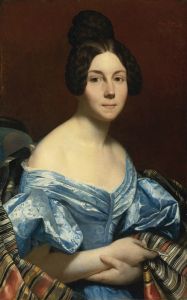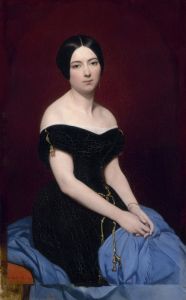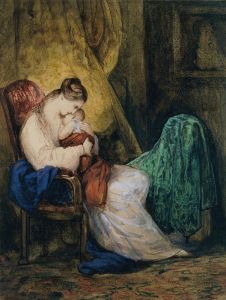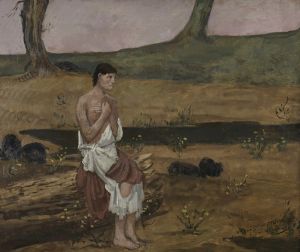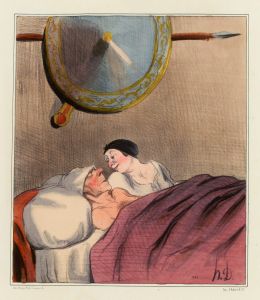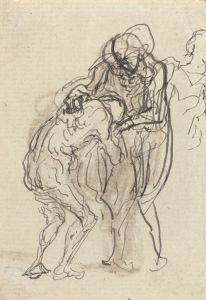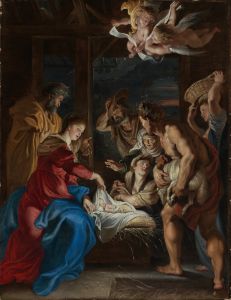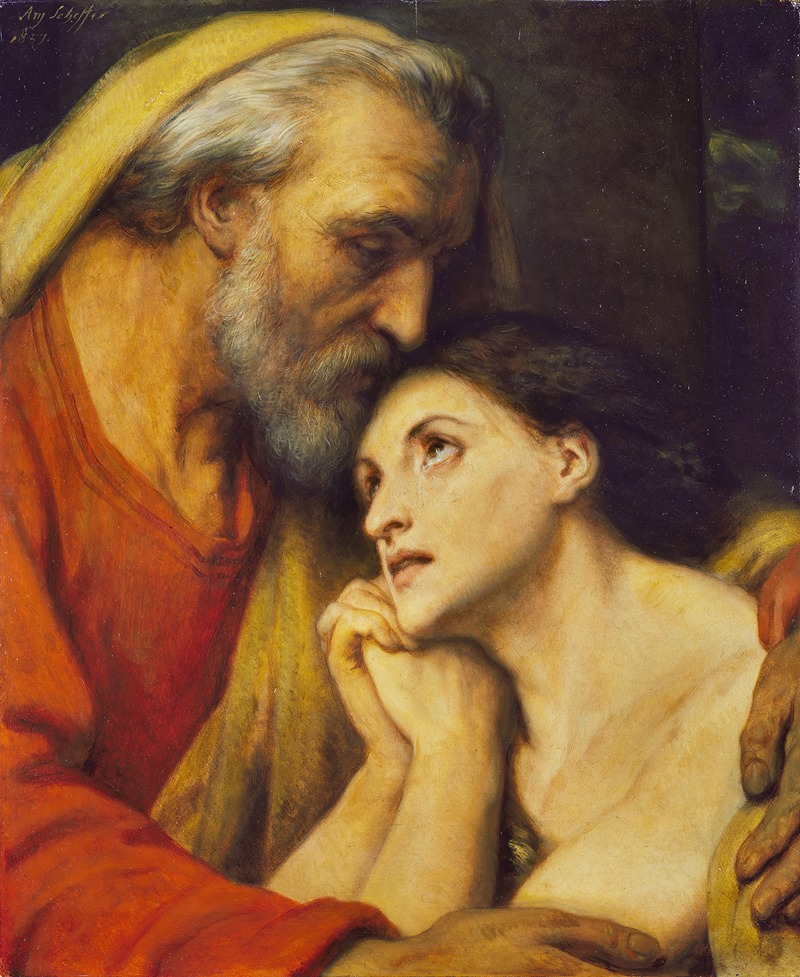
The Return of the Prodigal Son
A hand-painted replica of Ary Scheffer’s masterpiece The Return of the Prodigal Son, meticulously crafted by professional artists to capture the true essence of the original. Each piece is created with museum-quality canvas and rare mineral pigments, carefully painted by experienced artists with delicate brushstrokes and rich, layered colors to perfectly recreate the texture of the original artwork. Unlike machine-printed reproductions, this hand-painted version brings the painting to life, infused with the artist’s emotions and skill in every stroke. Whether for personal collection or home decoration, it instantly elevates the artistic atmosphere of any space.
Ary Scheffer's painting The Return of the Prodigal Son is a work of art inspired by the biblical parable of the prodigal son, as recounted in the Gospel of Luke (Luke 15:11–32). The parable tells the story of a wayward son who squanders his inheritance but is ultimately welcomed back with open arms by his forgiving father. This theme of repentance, forgiveness, and unconditional love has been a popular subject in Christian art for centuries, and Scheffer's interpretation is one of the notable examples.
Ary Scheffer (1795–1858) was a Dutch-French Romantic painter known for his emotionally charged and spiritually resonant works. He often drew inspiration from literature, religion, and philosophy, creating pieces that reflected the Romantic era's emphasis on emotion and individual experience. Scheffer's works frequently explored themes of morality, redemption, and human suffering, making the story of the prodigal son a fitting subject for his artistic vision.
In The Return of the Prodigal Son, Scheffer captures the emotional climax of the parable: the moment when the repentant son is embraced by his father. The painting emphasizes the deep emotional connection between the two figures, with the father’s gesture of forgiveness and the son’s posture of humility and remorse. Scheffer’s use of light and shadow enhances the spiritual tone of the scene, drawing attention to the central figures and creating a sense of intimacy and solemnity. The composition is relatively simple, focusing on the emotional interaction rather than elaborate background details or additional characters.
The exact date of the painting's creation is not definitively documented, but it is consistent with Scheffer's broader body of work, which often explored religious and moral themes during the mid-19th century. Scheffer's style in this painting reflects his Romantic sensibilities, with an emphasis on emotional expression and a subdued, contemplative atmosphere.
While The Return of the Prodigal Son is not as widely known as some of Scheffer's other works, such as his depictions of literary subjects like Goethe's Faust or Dante's Divine Comedy, it remains a significant example of his religious art. The painting is representative of Scheffer's ability to convey profound emotional and spiritual themes through his restrained yet evocative style.
Further details about the painting's current location, provenance, or reception are not readily available in historical records.





